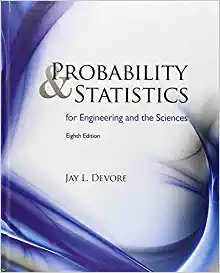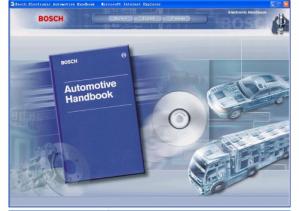- Publisher : Cengage Learning; 8th edition (January 1, 2011)
- Language : English
- Format: ebook/pdf
- ISBN-10 : 0538733527
- ISBN-13 : 978-0538733526
Probability and Statistics for Engineering and the Sciences 8th Edition by Jay L. Devore (Author)
$10.00
This market-leading text provides a comprehensive introduction to probability and statistics for engineering students in all specialties. Proven, accurate, and lauded for its excellent examples, Probability and Statistics for Engineering and the Sciences evidences Jay Devore’s reputation as an outstanding author and leader in the academic community. Devore emphasizes concepts, models, methodology, and applications as opposed to rigorous mathematical development and derivations. Aided by his lively and realistic examples, students go beyond simply learning about statistics; they also learn how to put statistical methods to use.
New Features
- More than 40 new examples and 100 new problems were carefully researched and written using the most up-to-date real data.
- Chapter 1, “Overview and Descriptive Statistics,” contains a new subsection, “The Scope of Modern Statistics,” which describes and exemplifies how statistics is used in modern disciplines.
- A significantly revised and simplified Chapter 8, “Tests of Hypotheses Based on a Single Sample,” also has a new subsection entitled “More on Interpreting P-values.”
- Wherever possible throughout the book, the language has been tightened and simplified to improve clarity.
Additional Features
- “Simulation Experiments” help students gain an understanding of sampling distributions and the insight they provide, especially when a derivation is too complex to carry out.
- Strong computer coverage, especially with ANOVA and regression, is supported by an abundance of computer output from SAS® and MINITAB® and coverage of computer methods. Inclusion of JavaTM Applets from Gary McClelland’s Seeing Statistics, specifically designed for this calculus-based text, allows students to experience statistics firsthand.
- Sample exams help students build confidence and master concepts prior to taking class exams; the glossary of symbols/acronyms, which includes text page references, is another useful study aid.
- Several exercises refer to material covered in earlier sections and chapters, allowing students to more easily see the connections between concepts.
- Virtually every example and exercise has a real-world context. Real data in exercises and examples stimulate students’ interest and enhance their comprehension of concepts.
- Notable content includes a strong emphasis on the role that variation plays in statistics, emphasis on the nature of variation in the slope estimate in simple linear regression, and inclusion of a detailed description of pooled t procedures to provide a balance between un-pooled and pooled analyses.





